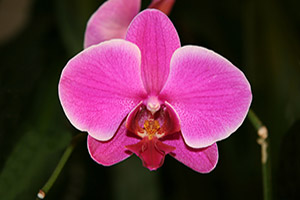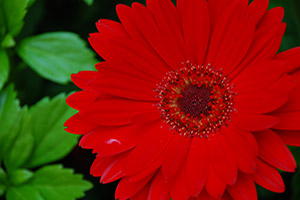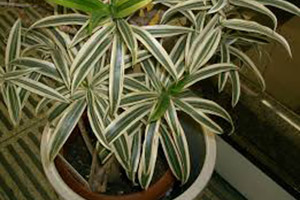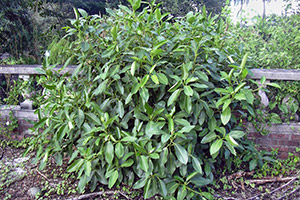Yep, it's true. Certain plants can actually help clean your air.
Second Nature is in the business of delivering clean air. Most commonly, this is done by automatically sending you the exact filters you need, exactly when you need them. However, there are some additional ways you can keep the air you and your family breathe clean... there are many plants that actually improve indoor air quality by removing some pollutants from the air, operating as a natural air filter! While these plants cannot replace a regularly changed pleated air filter, they act as a supplemental cleaner to be used in addition to regularly-changed air filters.
NASA and the Associated Landscape Contractors of America (LACA) did extensive studies on how to create healthier environments in outer space. Due to this research, we now have much more information about how to use plants to help with the air quality indoors on our own planet! They found out that some of the common issues holding our air quality back were chemicals like:
- Formaldehyde: Found in particle board, foam insulation, cleaning products and treated papers/fabrics. If you own particle-board furniture, grocery bags, tissues, paper towels, or anything that's been treated basically to make it stiffer/wrinkle-resistant/fire retardant/water repellent - you have formaldehyde in your air.
- Xylene: Xylene is used as a solvent in the printing, rubber, paint and leather industries. Over time, exposure to xylene can greatly affect the central nervous system.
- Benzene: Being one of the top 20 chemicals for production volume, benzene is found in pretty much anything created using manufacturing processes like paints, glues, furniture wax and detergents. A major source of benzene exposure is tobacco smoke and benzene has been linked with causing cancer.
- Trichloroethane: As known as “methyl chloroform,” this solvent can be found in adhesives, varnishes, paints and some consumer products.
Not to fear! The moral of this story in particular is that air purifying plants can help rid your house of these toxins.
All plants provide some benefit to air quality, but research shows that tropical plants (grown as houseplants in cooler climates) are particularly effective at processing gases and chemicals. Because they grow in dense rainforests with very little light, they have evolved to be very efficient at photosynthesis, which includes the absorption of gases from the air. In addition, as plants transpire (emit water from the leaves), air is drawn down around the roots, where root microbes quickly adapt and begin “eating” the harmful chemicals that are absorbed.
Here are some of the best plants you can have around to help increase your air quality!

Orchids
Orchids typically get a bad rap for being very difficult to grow (personally, I have never managed to keep one alive) But according to some articles, orchids are typically killed with too much water and sunlight. If you leave your orchid alone, it will help rid your air of some of the xylene we previously mentioned and they also give off oxygen at night!

Mother-In-Law's Tongue
Also called snake plant, this is an evergreen perennial plant that is extremely easy to grow in a house or office. Note that during winter it needs only one watering every couple of months (many people kill theirs by overwatering them). According to the studies by NASA, this is single-handedly one of the best plants for improving indoor air quality as it passively soaks up nitrogen oxides formaldehyde.

Palms
Palms are extremely hardy, extremely good plants for people who tend to kill off their attempts at a garden every year. Bamboo Palm (Chamaedorea seifrizii) is especially effective (and low maintenance). They particularly target the toxins produced by cigarette smoke so keep these plants in mind if you ever need to give a gift to a friend who can't kick the habit!

Philodendrons
Philodendrons, particularly Heartleaf (Philodendron scandens ‘oxycardium') are easy houseplants that make them pretty but also pretty good at sucking toxins out of the air.

English Ivy
English Ivy naturally originated in Europe but it makes for a great houseplant in North America, too. Be mindful to keep this plant a houseplant, however, as it is very effective at taking over gardens and has been labeled an invasive species in a lot of areas where it has been introduced.

Ferns
The large fronds of fern plants have helped get rid of pollutants in the air for over 360 million years, believe it or not. They also help remediate contaminated soils due to their hardiness and unique properties.

Gerber Daisy
Known for looking too pretty to be true, Gerber Daisy plants are excellent at dealing with trichloroethylene (from dry cleaning) and benzene (from inks). Just make sure you give them a lot of light!

Schefflera
Schefflera are waxy-looking plants but are extremely hardy, long-lasting and can even be easily rooted to create more plants (I've done it and now both of mine are over three feet tall!)

Dracaena
Dracaena, particularly Dracaena reflexa, is a very good plant to grow in many different types of light as it absorbs unhappy toxins from the air. Be careful as these, like peace lilies, can be poisonous for pets. And you may have already gotten one accidentally before - rooted stem cuttings sold as “lucky bamboo” are actually just dracaena plants in disguise.

Ficus
The common ficus (also known as fig trees) are keystone species in many rainforest ecosystems, which can make them extremely helpful in processing gases in your house. Caring for a ficus tree can be difficult at first to figure out a good placement for it and ideal watering conditions, but once you're set these trees can last for a very long time.
Topics:




